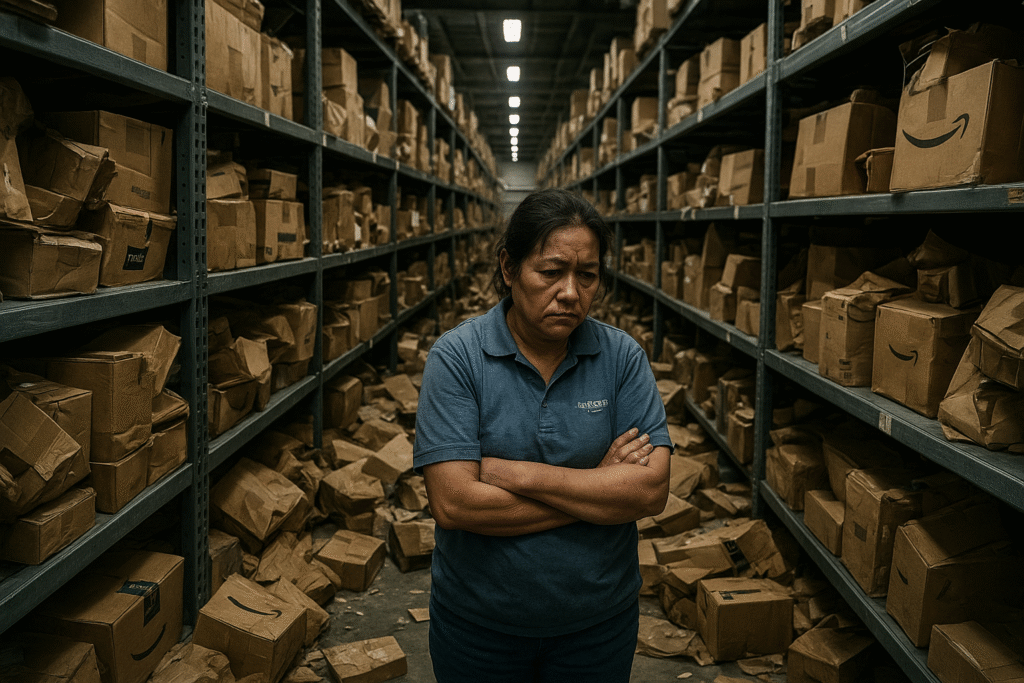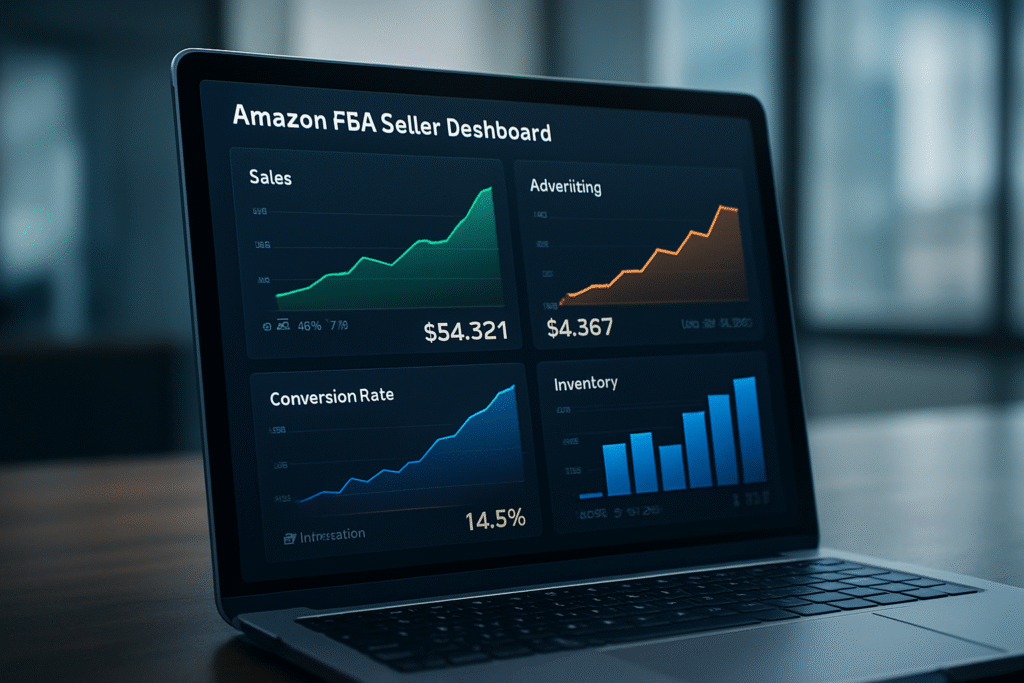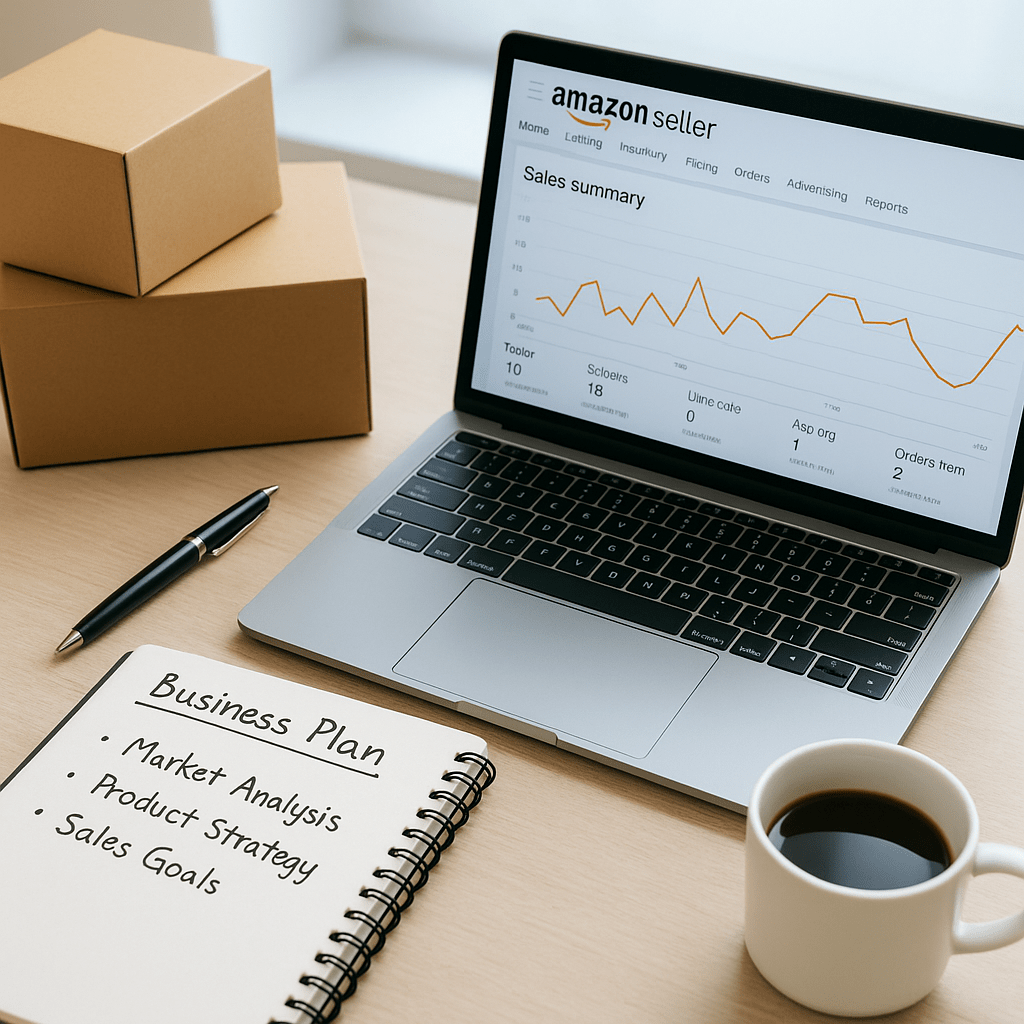Scaling Amazon FBA Business: Why Most Sellers Fail and How to Avoid Mistakes
Scaling Amazon FBA Business
Introduction:
Scaling an Amazon FBA business is one of the biggest goals for sellers worldwide. At first, selling on Amazon feels exciting—your first product sells, reviews come in, and profits start to grow. But then comes the real challenge: scaling. Many sellers quickly realize that moving from a small operation to a true business is much harder than they thought.
The truth is, most sellers fail to scale because they underestimate the challenges of managing cash flow, inventory management issues Amazon throws their way, and Amazon PPC scaling mistakes that eat into profits. If you want to succeed, you need to understand why sellers fail—and exactly how to avoid their mistakes.
Table of Contents:
- The Harsh Reality of Scaling Amazon FBA Business
- Common Amazon Seller Mistakes That Kill Growth
- Amazon Business Growth Challenges You Must Overcome
- FBA Growth Mistakes and How to Fix Them
- Cash Flow Problems Amazon Sellers Face
- Inventory Management Issues on Amazon
- Amazon Listing Optimization Errors
- Amazon PPC Scaling Mistakes That Hurt Sellers
- Marketing Mistakes Amazon FBA Sellers Make
- Building a Winning Amazon Seller Scaling Strategy
- Amazon Growth Hacks for Faster Scaling
- Case Study: Failed Amazon Private Label Products
- Customer Service & Brand Building Challenges
- Advanced eCommerce Business Scaling Tips
- Amazon Sales Stagnation Issues and Recovery
- The Mindset Shift Needed for Scaling Amazon FBA
- Conclusion
- FAQ: Scaling Amazon FBA Business
The Harsh Reality of Scaling Amazon FBA Business:
When you start selling, every small win feels exciting. But once you hit a certain level, the challenges multiply:
- More competition enters your niche.
- Amazon fees increase with higher sales volumes.
- Operational mistakes cost more because the scale is bigger.
Many sellers realize too late that scaling is not about working harder—it’s about working smarter and building systems.
Common Amazon Seller Mistakes That Kill Growth:
Some mistakes are so common that they almost guarantee failure if repeated.
- Launching products without validating demand.
- Ignoring profit margins while chasing sales volume.
- Expanding too quickly without cash reserves.
- Neglecting branding, relying only on Amazon’s platform.
👉 Avoiding these early mistakes sets a strong foundation for growth.

Amazon Business Growth Challenges You Must Overcome:
Growth challenges appear at every stage of the journey.
- Competition on Amazon marketplace: New sellers and aggressive competitors enter daily.
- Amazon brand building challenges: Without brand identity, you’re easily replaced.
- Customer service problems Amazon sellers face: Delayed responses or poor support cost you ratings.
- Operational headaches: More sales mean more logistics, returns, and coordination.
Scaling is about solving these challenges systematically.
FBA Growth Mistakes and How to Fix Them:
Mistakes sellers often make when scaling:
- Depending on one hero product.
- Expanding into new categories without research.
- Failing to manage costs during rapid growth.
Fixes that work:
- Diversify your product line gradually.
- Enter niches only after detailed keyword and competition analysis.
Track expenses, ad spend, and profit margins in real-time.
Cash Flow Problems Amazon Sellers Face:
Cash flow is one of the biggest killers of growth.
- Amazon delays payments.
- Inventory orders require upfront capital.
- PPC ads consume money before sales return.
How to manage it:
- Forecast expenses and sales carefully.
- Negotiate flexible payment terms with suppliers.
Keep an emergency fund for slow months.
Inventory Management Issues on Amazon:
Inventory is often where sellers lose control.
- Stockouts destroy rankings and momentum.
- Overstocking locks up cash and triggers high storage fees.
- Poor forecasting ruins seasonal sales.
👉 Smart sellers use tools to track sales velocity, reorder on time, and diversify supplier relationships to reduce risks.
Amazon Listing Optimization Errors:
Even great products fail without strong listings.
- Weak titles miss key keywords.
- Poor images fail to convince buyers.
- No bullet points to highlight benefits.
Optimization tips:
- Craft keyword-rich but natural titles.
- Use professional lifestyle and product images.
- Add a persuasive copy that focuses on solving customer problems.
Amazon PPC Scaling Mistakes That Hurt Sellers:
Many sellers waste thousands on ads because they don’t understand how to scale PPC.
- Scaling campaigns before testing.
- Not using negative keywords.
- Treating PPC as a cost, not an investment.
Solution: Start small, test campaigns, track ACOS, and scale only what’s profitable.
Marketing Mistakes Amazon FBA Sellers Make:
Amazon is powerful, but relying on it alone is a mistake.
- No off-Amazon marketing strategy.
- Ignoring social proof and influencers.
- Not building an email list for long-term sales.
Brand awareness outside Amazon gives sellers a competitive advantage.
Building a Winning Amazon Seller Scaling Strategy:
A proper Amazon seller scaling strategy must combine:
- Validated product research – Choose niches with demand and room to grow.
- Brand differentiation – Create unique value beyond generic competitors.
- PPC scaling – Increase ad spend only when proven profitable.
- Inventory control – Prevent both stockouts and overstocking.
- Cash flow planning – Reinvest wisely, not recklessly.
Amazon Growth Hacks for Faster Scaling:
Growth hacks can speed up results when used smartly:
- Bundle products to increase order value.
- Use pricing psychology to attract buyers.
- Leverage reviews and social proof in marketing.
- Expand to international marketplaces once stable in your main market.
Automate repetitive tasks using software and VAs.
Case Study: Failed Amazon Private Label Products:
Consider a seller who launched generic phone cases. The product had demand, but competition was fierce. Without branding, reviews, or unique features, the product became just another listing.
Result: High ad spend, low profits, and eventual failure.
Lesson: Success requires differentiation, branding, and a long-term strategy—not just launching what’s trending.

Customer Service & Brand Building Challenges:
Customer service directly impacts scaling.
- Fast responses = happy customers.
- Poor support = negative reviews and lost sales.
- Personalized communication = repeat buyers.
Brand building ensures customers remember you—not just Amazon
Advanced eCommerce Business Scaling Tips:
Scaling FBA means thinking beyond Amazon.
- Create a Shopify store to diversify sales channels.
- Use content marketing to educate customers.
- Build loyalty programs for repeat business.
- Explore partnerships with influencers and micro-celebrities.
- Expand into wholesale and B2B once established
Amazon Sales Stagnation Issues and Recovery:
Sellers often hit a plateau where sales stop growing.
- Over-reliance on one product.
- Lack of new marketing experiments.
- Ignoring customer feedback.
Recovery strategy: Relaunch old products with optimized listings, test new ad strategies, and keep innovating.
The Mindset Shift Needed for Scaling Amazon FBA:
Scaling is not just about tactics—it’s about mindset.
- Treat your store like a business, not a side hustle.
- Focus on systems, not just sales.
- Think long-term brand building, not short-term profits.
- Embrace challenges as part of growth.
Conclusion:
Scaling an Amazon FBA business takes more than just finding a product and running ads. Most sellers fail because they ignore the fundamentals: cash flow problems Amazon sellers face, inventory management issues Amazon sellers encounter, and Amazon listing optimization errors that ruin conversions.
If you commit to avoiding these mistakes, building a strong Amazon seller scaling strategy, and adopting a long-term mindset, you can scale sustainably and thrive in the competitive Amazon marketplace.
👉 Share your thoughts in the comments, let others know about this guide, and subscribe for more Amazon growth hacks to fuel your journey.
Why do most Amazon sellers fail at scaling?
How can I avoid inventory management issues on Amazon?
What is the best Amazon seller scaling strategy?
Do all private label products fail on Amazon?
How important is customer service in scaling?
Recent Posts
- All Post
- Amazon Compliance
- Amazon FBA Guide
- amazon market analysis
- Amazon PPC
- Amazon Stock
- Amazon Tools
- Business Strategy
- Ecommerce News & Analysis
- Full Account Management Services
- Guide
- Guide 2025
- News
- News 2026
- PPC Services
- Prime day
- Stories
- Team Memebers
- Technology and Digital Services
- Top Agencies
- Top PPC tools



Get a Quick Solution
Need help fast? Our expert team is here to provide you with efficient and reliable solutions tailored to your needs. Don’t wait—reach out today!
Categories
- Amazon Compliance (5)
- Amazon FBA Guide (6)
- amazon market analysis (2)
- Amazon PPC (30)
- Amazon Stock (1)
- Amazon Tools (1)
- Business Strategy (12)
- Ecommerce News & Analysis (6)
- Full Account Management Services (58)
- Guide 2025 (20)
- News 2026 (12)
- PPC Services (58)
- Prime day (2)
- Technology and Digital Services (1)
- Top PPC tools (1)
Subscribe for Growth Tips, Seller Hacks & eCom Wins


